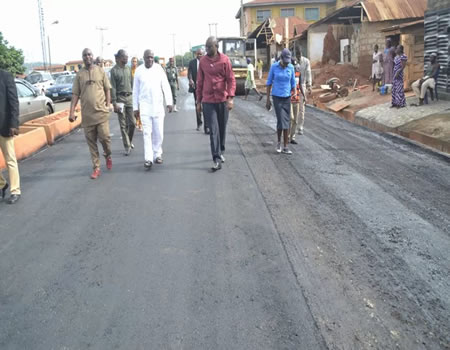Matters however worsened when Governor Fayose stated in a public statement that the Olukere, one of the two traditional rulers in the town had, after his protest on the significance of the tree, been requested to propitiate the deities on behalf of the people and the state government so that they could “allow” the passage of the road and relocate from the base of the tree, a project for which a certain amount of money was allegedly paid. This degenerated into a heated debate in the town, to the point of disturbing the peace, and it has become simply unwise to leave matters to fester. The claims and counterclaims between the traditional ruler and the government reached the peak of embarrassment, with the ruler accusing the government of some sort of cheap blackmail.
The alleged request for money by the traditional ruler would certainly not have been necessary if the relocation of the deities was not negotiable. But with the subsequent developments, the traditional ruler really overdid himself by messing up the people, the deities and the state government in a single transaction. Yet it is possible for tradition and development to coexist without necessarily compromising the royal dignity of the palace. In any event, infrastructure development without the goodwill and understanding of the people for whom the development was initially meant would eventually be futile. The goodwill and understanding of the people can only be cultivated by recognising their values, part of which is the sacredness of the said tree.
To be sure, world bodies and international organisations always routinely give due recognition to people’s heritage and validate them as they initiate, pursue and implement development programmes in rural areas and settings with little or no hitches. Some of these sites are internationally recognised as tourist sites with the stamp of validation by many bodies. Therefore, the furore which ensued from the transactions between the traditional ruler and the state government and which implicated the people cannot be allowed to stall the infrastructure development earmarked for the Ikere-Ekiti community. The state government has to look beyond the primordial inclinations of the locality and insist on making the project a reality.
It is possible for the contractor to implement the project easily and still retain the sacred tree. We think that the sacred tree can still be accommodated by allowing the new road to give the tree a wide berth. This may eventually add value to the tourism potentials of the tree which survived the controversy and sectional grudges generated by the planned construction of a modern road. The state government was right to have assumed that the deities could be persuaded to relocate based on the request from the traditional ruler. But now that the people have demonstrated a resolve not to compromise their stand on the location of the tree, the state government should respect their collective wishes and ask for a refund from the traditional institution which apparently misjudged their preferences.
We think that the people’s wishes to treasure the site of their sacred tree should be respected. But that should also not bar them from enjoying a dual carriageway.






